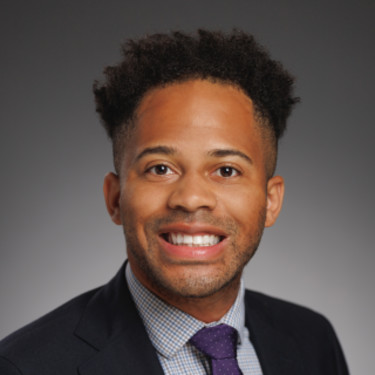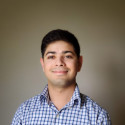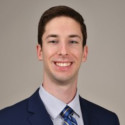The evenings of howling and clapping for health care clinicians were short-lived and are now in the distant past. That is especially true for primary care.
By the time the COVID-19 pandemic arrived at my doorstep, I had been practicing medicine for 16 years. I am board-certified in internal medicine, and until April 2023, I was a PCP at a UCSF-affiliated network north of San Francisco.
Prior to March 2020, the first five minutes of nearly every appointment were spent listening to patients' justified complaints – voicemails left unanswered, long hold times, high bills, and issues with specialist access. My very first Yelp review was a one-star rating. The patient said she was satisfied with my care but was very unhappy with the office and listed all the reasons why.
At that time, I arrived early to review charts, studies, and consult notes, and spent lunch handling calls, patient messages, and refilling prescriptions. I stayed late to manage patient care, ensuring every task was complete before going home each night. At some point, the organization began sending patient satisfaction surveys, the results of which were published online. Most survey questions focused on administrative issues — call wait times, staff friendliness, and check-in speed — while only a few addressed the actual care provided. Despite this, the overall score appeared next to my name, not the network's, as if it reflected my individual performance. Yet I had no control over practice management, staffing, or support services.
I wasn't just a passive participant. I served on nearly every committee, including the board of the medical network I worked for. Repeatedly, I heard that primary care was a financial loss for the organization and, therefore, not a funding priority. When a generous donor gave a significant sum specifically for primary care, I was asked what equipment we needed. I replied that the most expensive tool we use is a stethoscope — and we buy that ourselves. What we really needed was support staff. But I learned that philanthropic donations couldn't fund salaried positions.
In 2020, I was also managing an acute adult after-hours clinic, staffed by PCPs who saw urgent patients after their regular workday. In March, I was asked to convert it into an acute fever clinic for potential COVID-19 cases. We relocated to an isolated office to protect other patients and asked PCPs to staff the clinic one day a week. At that time, we knew very little about COVID-19 — we had no testing, no treatment, only fear and uncertainty. Physicians who were at an increased risk already (older, pregnant, immunocompromised, etc) started working from home doing video visits, so my pool of available PCPs was much smaller than before. I sent out desperate emails requesting help from specialists, but only one infectious disease specialist volunteered.
For the first time in my career, it felt like the organization, patients, and community understood our value. At every Emergency Command meeting at the hospital, we were thanked for keeping patients out of the hospital — something PCPs quietly do every day. We received cards, heard evening howls of support, and, for a brief time, patients stopped complaining about broken systems. But the euphoria didn't last. Within a year, many PCPs — including my two senior partners — retired. The response from leadership? Increase volume. Remaining physicians saw more patients, responded to double the number of messages, and were told to "convert" portal questions into reimbursable telehealth visits.
Whereas 16-17 patients had once made for a busy day, by 2023 I was seeing up to 24. Each visit was shorter — often just 15 minutes — and came with an avalanche of messages, phone calls, and refill requests. As staffing shortages worsened, patients again faced long hold times and unanswered calls. Once more, I spent the first five minutes of every visit apologizing for failures I couldn't fix.
Before the Affordable Care Act in 2011, I was in private practice and could control my patient volume. A busy day had 15 patients. I visited my own patients in the hospital, at home, and in nursing homes. When some colleagues left to start concierge practices, I resisted — I had ethical objections to such models. But by 2023, I no longer had a say in how many patients I saw or how much time I spent with them. I lived in fear of missing something critical. I saw reviews that said patients could tell I was rushed, stressed, and burned out.
In April 2023, I made the difficult decision to leave conventional medicine and open a concierge practice — not because my ethics had changed, but because the system no longer aligned with them. Two years in, I realized I had always practiced concierge-level care. I had always performed comprehensive physical exams during annual wellness visits — something I now know is no longer standard. Many new patients told me they'd never received a full exam. Medicare doesn't even require physicians to touch the patient during a wellness visit — something most people don't realize. In an overloaded system, clinicians do the bare minimum. Yet I've lost count of the number of times I've caught critical diagnoses during a hands-on exam: arrhythmias that could lead to strokes, murmurs that would need follow-up and possible surgery, even asymptomatic abdominal masses that were due to lymphoma. Physical exams take time, and time isn't profitable, but skipping them costs lives.
Since I left, three more PCPs at my previous job followed me into membership-based care. Eight others left the area entirely. Recruiting new PCPs has become nearly impossible in high-cost regions like ours. Fewer young doctors are choosing primary care — they see their mentors disillusioned and exhausted. Meanwhile, patients struggle to find a clinician. Demand is soaring, supply is dwindling, and quality is eroding under the pressure.
Primary care is the foundation of a healthy society, but that foundation is cracking. If we want to rebuild it, we must stop treating primary care as a cost center and start recognizing it as the value driver it truly is. Without support, respect, and structural change, more physicians will leave, and more patients will be left behind.
What are some moments in your career that made you realize how crucial your specialty is to public health? Share below!
Dr. Irene Teper is a board-certified internist who immigrated from the former Soviet Union to Buffalo, NY in 1989 and completed her medical training at SUNY Buffalo and St. Mary's Medical Center in San Francisco. After years in medical leadership and primary care with Marin Health, she opened a concierge primary care practice in San Rafael, CA in 2023.
Illustration by Jennifer Bogartz







